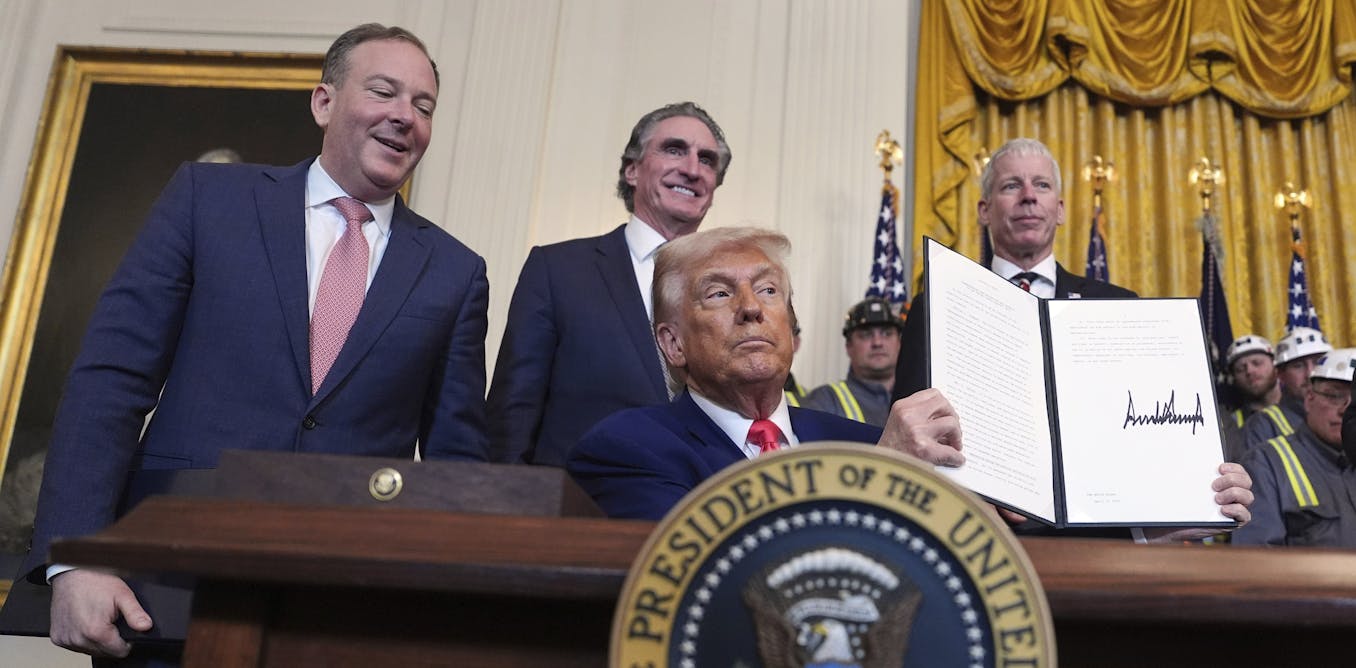Many Americans say they have lost trust in national news – but most still believe they can rely on the accuracy of local news.
In 2023, trust in national newspapers, TV and radio reached historic lows. Just 32% of Americans said they have a “great deal” or “fair amount” of trust in these news sources. In 1976, by comparison, 72% of Americans said they had a “great deal” or “fair amount” of trust in mass media, including newspapers, TV and radio.
And in 2021, the United States ranked last among 46 countries in the trust citizens placed in news outlets.
Yet even as the local news industry is declining in the U.S. – more than 3,200 local and regional newspapers have closed since 2005 – Americans still place much more trust in local news than they do in national news.
In 2024, 74% of Americans said they had “a lot of” or “some” trust in their local news organizations, and 85% believed their local news outlets are at least somewhat important to their community.
I am a former local journalist who studies the effects that media content can have on people. Local news can help people understand what their local government is doing, stay aware of day-to-day events, such as local weather, traffic, sports, schools and crime, and even feel a greater sense of community.
Despite their trust in local news, many Americans are not willing to pay for it. Only 23% of Americans who say they pay for online news report paying for a local or regional newspaper.
Media/ClassicStock/Getty Images
The decline of local news
News organizations in the U.S. have long relied on commercial business practices – such as advertising from companies and subscriptions from readers – that have not been financially sustainable since the mid-2000s.
Newspapers’ advertising revenue peaked around 2005 and has since rapidly declined from more than $49 billion a year in 2005 to less than $10 billion in 2020, according to the Pew Research Center. This drop was driven by the rise of the internet.
As a result, the U.S. has lost more than a third of its local and regional newspapers since 2004.
Now, “news deserts” have become more common. This term describes places where there are not enough reliable news sources to help people get information about their local communities.
Of the local newspapers that remain, 80% are weeklies, as opposed to the daily local newspapers that were more common in the past.
With fewer reporters and editors who closely follow the ins and outs of local and state issues, local newspapers are now less able to hold state and local government officials accountable for their actions.
Americans also read local newspapers less than they once did. Since 2015, print and digital circulation numbers have dropped 40% for weekday news editions and 45% for Sunday editions among locally focused daily newspapers and their websites.
Instead, a larger percentage of Americans now turn to their family members, friends and neighbors than their local news outlets for local news.
Local news unites people, makes them more engaged
Despite local news’ problems with declining revenue and readership, Americans still trust local news – and this trust crosses partisan lines.
A 2024 Pew Research Center survey found that both Republicans and Democrats think local journalists are in touch with their local communities. The majority of Democrats and Republicans in this survey agreed that local news media “report news accurately,” “are transparent about their reporting,” “cover the most important stories/issues” and “keep an eye on local political leaders.”
This might be because local newspapers can focus on issues people encounter in their day-to-day lives rather than on national politics. In many cases, readers are also able to more easily connect with local journalists in their communities and share story ideas or feedback.
People learn about their elected officials and become more informed about local issues from their local news, making it an important component of developing a well-informed public.
Local news gives constituents information they need to monitor whether their local leaders are implementing campaign promises. People who regularly follow local news are more likely to participate in politics, including voting in local elections, contacting a local public official and attending a town hall meeting.

Don Emmert/AFP via Getty Images
The current local news environment
When people no longer have access to local news sources, or they stop following local news coverage, their faith in the integrity of local elections decreases, their ability to assess elected officials is worse, and voter turnout is lower in local elections, compared with those who do follow, read, watch or listen to local news.
Some Americans started relying more heavily on national news when local newspapers shut down, which research shows led to increases in political polarization. My research found that when people trust a partisan-leaning national news source, for example, they’re very likely to agree with the partisan-slanted news stories published by that source.
As nonpartisan local newspapers have vanished or downsized, partisan-leaning online local news content has cropped up over the past several years. These sites publish news stories that are focused on local issues but approach it with a partisan bent. As a result, people looking for local news information may take in unreliable information that is presented as local news and interpret it as trustworthy.
Verifying the origins and intentions of information continues to be paramount for news consumers to make sure they are receiving accurate information – including when it comes to local news.
While the local news industry continues to face financial problems, research shows that local journalists could consider new content ideas to increase readers’ interest, such as engaging with community members by answering their specific questions.
Meanwhile, I believe that news consumers should consider whether they are willing to pay for and continuously support the local news they say that they trust. Without that support, their trusted local news source may disappear.




